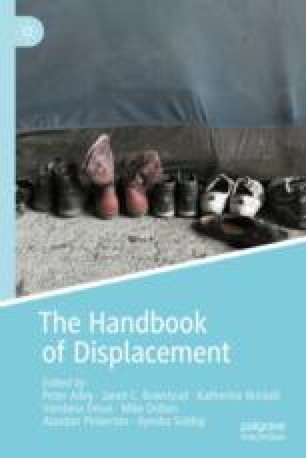Chapter in The Handbook of Displacement pp 771-784
Local faith communities often assist displaced people, from acting as first responders to long-term support. Given that local faith communities are critical local civil society actors, there has been relatively little attention paid to them by other international humanitarian actors. Overly simplistic interpretation of their roles in displacement confine faith communities to stereotypes of ‘good’ and ‘bad’ local response. To demonstrate some of the nuance and complexity behind the role of local faith communities and their forms of resistance, Trotta and Wilkinson extensively review the literature to show how local faith communities are involved in responses to displacement from assisting people on the move, to arrival and reception, and long-term solutions.
 This Handbook provides the knowledge and tools needed to understand how displacement is lived, governed, and mediated as an unfolding and grounded process bound up in spatial inequities of power and injustice. The handbook ensures, first, that internal displacements and their everyday (re)occurrences are not overlooked; second, it questions ‘who counts’ by including ‘displaced’ people who are less obviously identifiable and a clearly circumscribed or categorised group; third, it stresses that while displacement suggests mobility, there are also periods and spaces of enforced stillness that are not adequately reflected in the displacement literature; and fourth, it re-evokes and explores the ‘place’ in displacement by critically interrogating peoples’ ‘right to place’ and the significance of placemaking, unmaking, and remaking in the contemporary world.
This Handbook provides the knowledge and tools needed to understand how displacement is lived, governed, and mediated as an unfolding and grounded process bound up in spatial inequities of power and injustice. The handbook ensures, first, that internal displacements and their everyday (re)occurrences are not overlooked; second, it questions ‘who counts’ by including ‘displaced’ people who are less obviously identifiable and a clearly circumscribed or categorised group; third, it stresses that while displacement suggests mobility, there are also periods and spaces of enforced stillness that are not adequately reflected in the displacement literature; and fourth, it re-evokes and explores the ‘place’ in displacement by critically interrogating peoples’ ‘right to place’ and the significance of placemaking, unmaking, and remaking in the contemporary world.
Please click on the download button to be directed to the book website.

